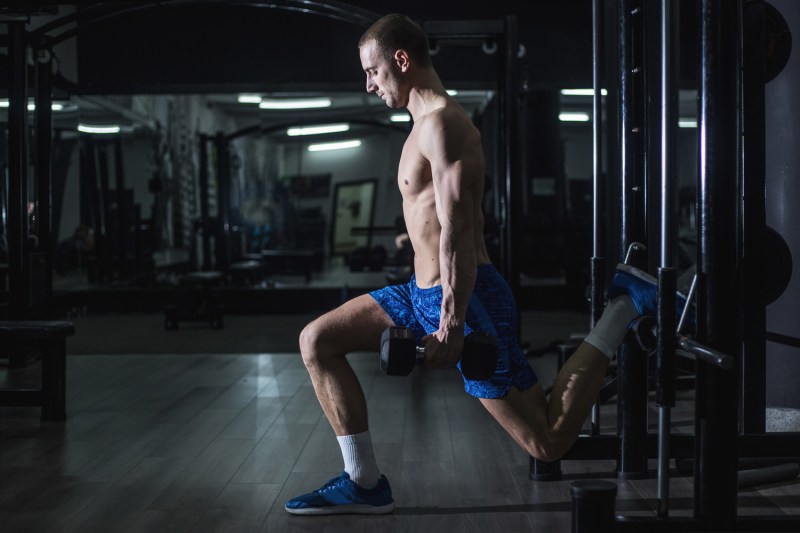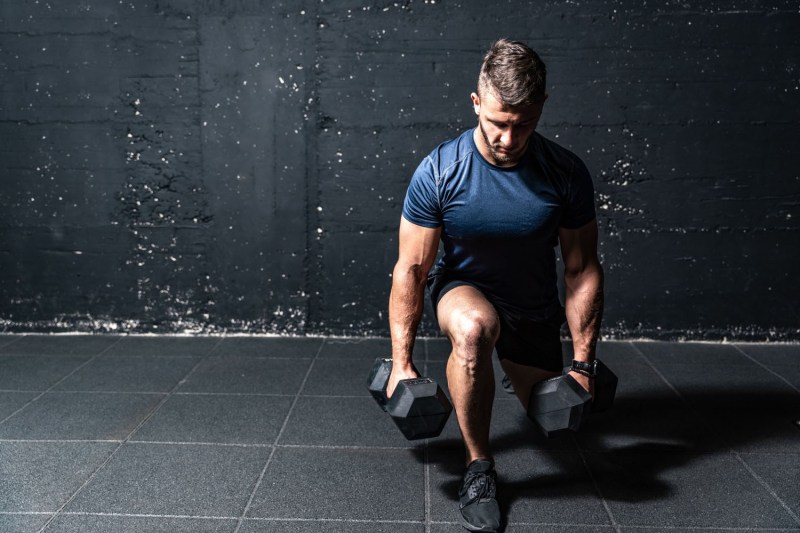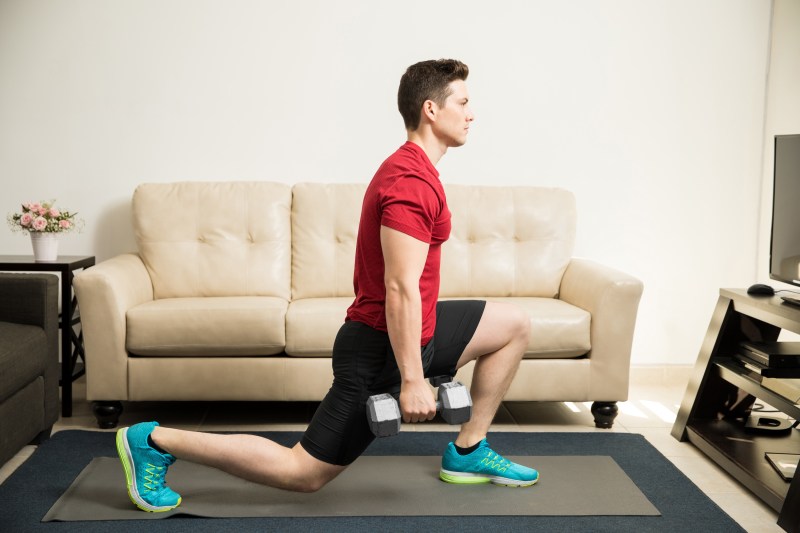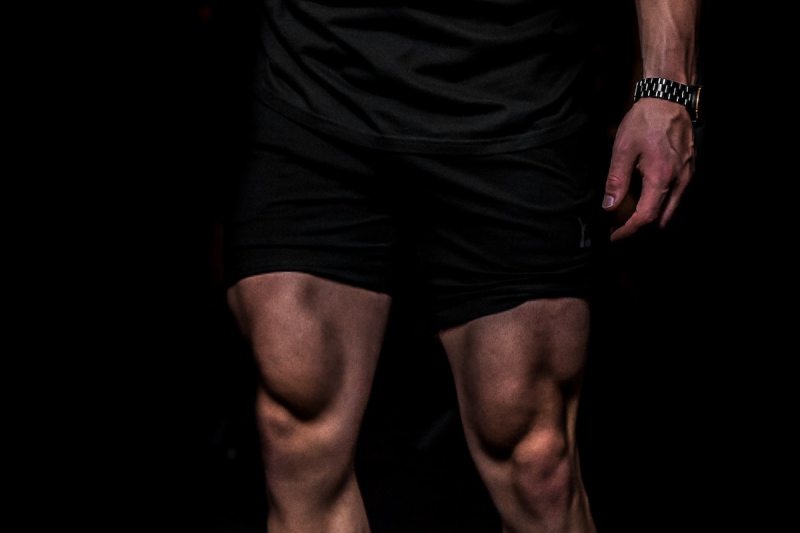
Dumbbells are a great tool for getting swole, whether you’re a beginner or an advanced lifter. To get bigger quads, both at home and at the gym, you don’t need the most high-end equipment. A set of dumbbells can do the trick.
You can train the different parts of the quads, getting deep stretches and contractions with dumbbells. This article will not only show you how to do that, but it will also give step-by-step instructions on how to perform the exercises for optimal results. Continue reading to learn how to use dumbbells to build monster quads!

What are the benefits of having strong quads?
The quads are one of the biggest muscles in the body, and as such, they have very important functions. Because they stabilize the knee, these muscles are important for everyday activities such as walking, running, kicking, and jumping.
The quads also improve overall balance and stability. Other functions of theirs include absorbing impact when your heel hits the floor and alleviating lower back stress.
Now that you know the practical benefits of having great quads, what about the aesthetic appeal? Developing strong quads would make them bigger, and there’s just something about the quads sticking through a pair of jeans that could make your casual outfits better. Let’s not forget that great quads also balance out your upper body frame, acquitting you from the chicken legs allegations.

Can you get big quads with only dumbbells?
Yes, you can achieve both the strength and aesthetic benefits of developed quads with only dumbbells. There are quite a number of machine and free-weight options for quad and general leg muscle development. If, however, all you have are dumbbells or you just prefer them, you can make it work.
Dumbbells are easy to work with, and you can use them to substantially grow any muscle group. Just like with any resistance or weight-training exercise, you just need some intensity and good form, and you’re good to go.

5 effective quad exercises with dumbbells
Goblet squats
Goblet squats are one of the easiest exercises to load the quads with. They can replace a traditional barbell squat or any other squat variation that trains the quads in a full range of motion. Grab the heaviest dumbbells you can find and follow these instructions:
- Hold a dumbbell up to your chest with your two hands. Then, place your legs shoulder-width apart or slightly wider.
- Bend at the knees and hips to lower into a squat, aiming to get your thighs parallel to the floor. Depending on what range of motion you can handle, you can go lower.
- Still keeping the weight close to your chest, with your chest up and back straight, drive through your knees to rise back up.
- Repeat the same movement for 8 to 15 reps, striving to maintain good form throughout.
Lunges
Lunges are a great exercise for targeting all the muscles in the thighs and the glutes, depending on how you approach them. To target the quads with lunges, grab two dumbbells you can hold for an extended period and follow these instructions:
- Stand straight with your chest up and the two dumbbells in your hands. Position your feet shoulder-width apart.
- Step forward with one leg, and lower your body until your knees are bent at a 90-degree angle. Ideally, the front thigh should be parallel to the ground, and the hind knee should just hover above it.
- Press into the heel of your front foot and push back up to the starting position, engaging your quads.
- Repeat the movement, leading with the other leg this time. Alternate the legs, performing 10 to 15 reps for each leg.
Sissy squats
Sissy squats emphasize a deep quad stretch, and they don’t require heavy weights. Quite often, you don’t even need weights for them. However, using a dumbbell could add some extra resistance to the exercise, making it more intense. Here’s how to perform sissy squats:
- Stand upright with your feet shoulder or hip-width apart, and hold a dumbbell in one hand, allowing it to hang just beside your knee. You could also hold the dumbbell up with your two hands like you’re performing a goblet squat.
- Anchor your heels firmly on the ground. You could stand with your heels on an elevated platform like a weight plate for extra stability.
- Start by slowly leaning back while still keeping your body straight from your knees to your head.
- Bend your knees and lower yourself as much as you can while still keeping your heels firmly placed and your torso leaned back.
- When you’ve gone as low as you can, bring yourself back to the starting point and repeat the movement with your heels still firmly placed on the ground and your torso leaned back.
- Perform 8 to 15 repetitions.
Bulgarian split squats
Bulgarian split squats are a great quad exercise for size and strength. They also target the quads and glutes and improve balance. Here’s how to perform them with dumbbells:
- Stand facing away from a bench or sturdy chair, about two feet in front of it. Hold a dumbbell in each hand at your sides, and lift your right foot, placing the dorsal part on the bench or sturdy chair.
- With the dorsal part of your right foot on the chair, bend your left knee to lower your body to the ground. Aim for your left thigh to be parallel to the ground and go lower if you feel comfortable.
- Drive through your left heel to bring your body back up, engaging your quads and glutes.
- Now, go down again, repeating the same movement for 12 to 15 reps.
- When you’re done with the left leg, switch to the right leg and do it all over again to also train the right quadriceps.
Leg extensions
If you do not have a traditional leg extension machine at your gym or you’re working out at home, you can simulate leg extensions with a dumbbell. Leg extensions are great because they isolate the quads, allowing you to train them with little to no pressure on the knees and hips. Here’s how to perform the exercise with dumbbells:
- Sit on a bench or chair with a straight back, and hold a dumbbell between your feet.
- With the dumbbell firmly placed between your two feet, extend your legs from the knee until they are out in front of you horizontally or parallel to the ground.
- Slowly return to the starting position and extend again.
- Perform 12 to 15 reps like this.

How to maximize quad gains
The best way to maximize quad gains is to consistently train them and ensure that you progressively overload. You can progressively overload in various ways, including increasing the weight you use for each exercise and increasing the number of reps you perform in each set.
So, if you’re trying to use dumbbells to grow your quads, increase the intensity from time to time. If you don’t have bigger dumbbells, you could simply increase the number of reps you perform in each rep. If you stay consistent with this, those gains are likely to come in no time.



